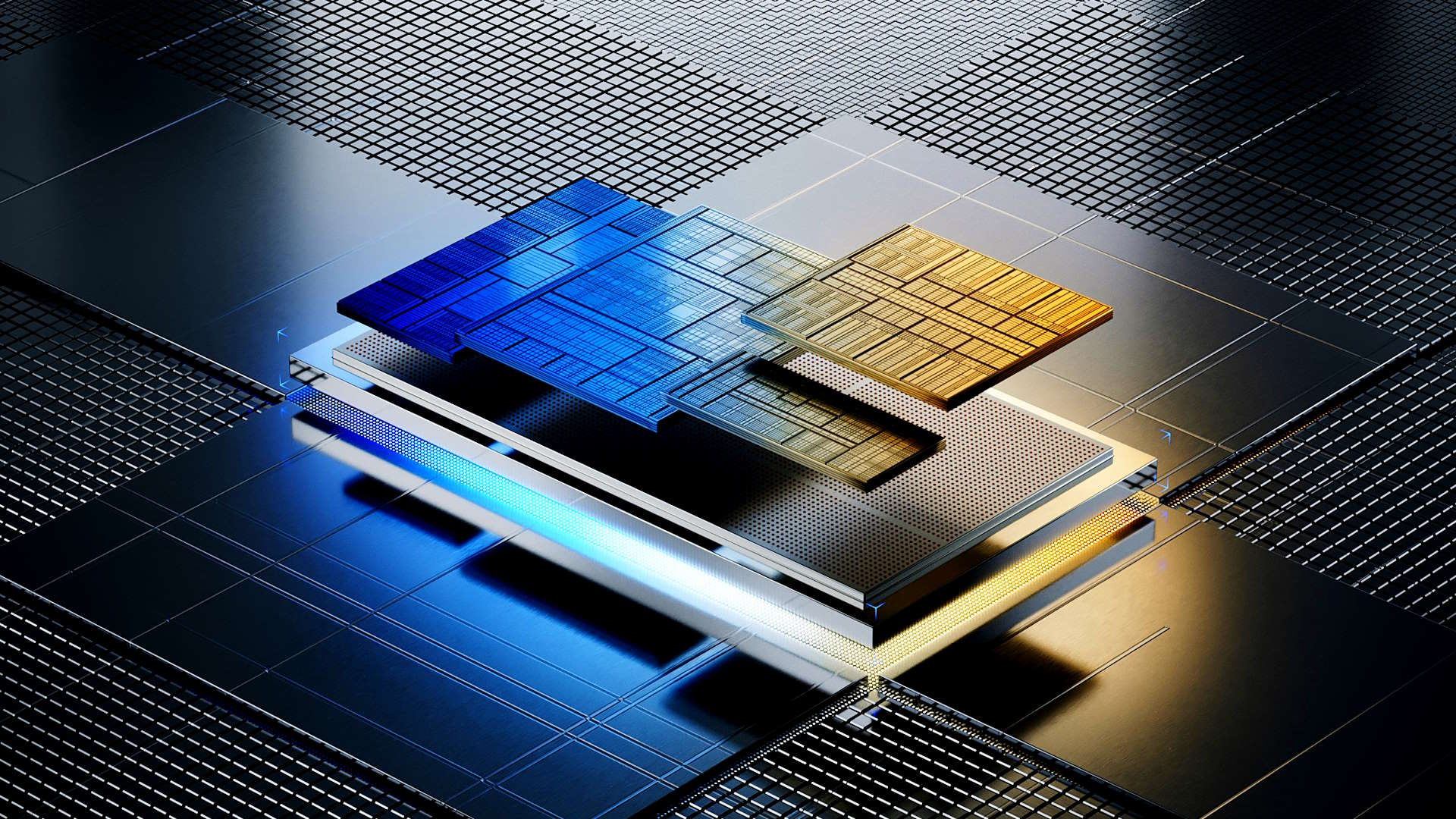
Intel has taken the wraps off its new Meteor Lake-based Core Ultra laptop CPUs, and it's aiming these low-power chips squarely at my favourite AMD chip of all time—the Ryzen 7 7840U. That's the similarly low-power Zen 4 processor at the heart of the latest Framework 13 mainboard, but also every single non-Valve handheld gaming PC that was released this year.
These are the first processors based on the Intel 4 (née Intel 7nm) production process, and come with the company's innovative tiled design. This mixes chiplets from different production processes and, importantly, from different companies together on top of a base layer which connects them all together.
So yes, this is Intel's first chiplet processor design, and it's split up into the following tiles, as highlighted by Jacob in his Intel Meteor Lake architecture deep dive.
- Compute tile - Containing both P-cores (Redwood Cove) and E-cores (Crestmont). Manufactured on Intel 4 process node.
- SoC tile - Containing traditional uncore components, a new AI engine called an NPU, a media block, the memory controller, and the Low Power Island—more on this in a moment. Manufactured by TSMC.
- Graphics tile - Containing an Intel Xe-LPG GPU with 8 Xe-cores, ray tracing support, and many shared features with existing Xe-HPG graphics cards (Alchemist). Built on TSMC N5 process node.
- IO tile - Thunderbolt and PCIe Gen 5 connectivity. Manufactured by TSMC.
- Base tile/die/interposer - Intel doesn't always refer to this as one of Meteor Lake's tiles—it's an interposer—but it is absolutely key to holding this chip together.
But only one of these tiles is actually using the new Intel 4 lithography, and only one actually manufactured by Intel itself. We've covered the design itself in some depth following Jacob's time out in Malaysia with the team which put these chips together. Suffice to say that these mobile chips have been built with efficiency in mind first and foremost, but also with one eye on gaming performance, too, because Intel's touting a performance boost over its previous generation graphics of 2x.
Interestingly, that doubling of frame rates is based on the best game of 2023, Baldur's Gate 3, which is certainly a welcome improvement. But, as you might expect from an Arc iGPU, its performance does definitely vary on a per-game basis. GTA V, for example, will only see a 9% frame rate boost over the previous generation of Intel laptop graphics.
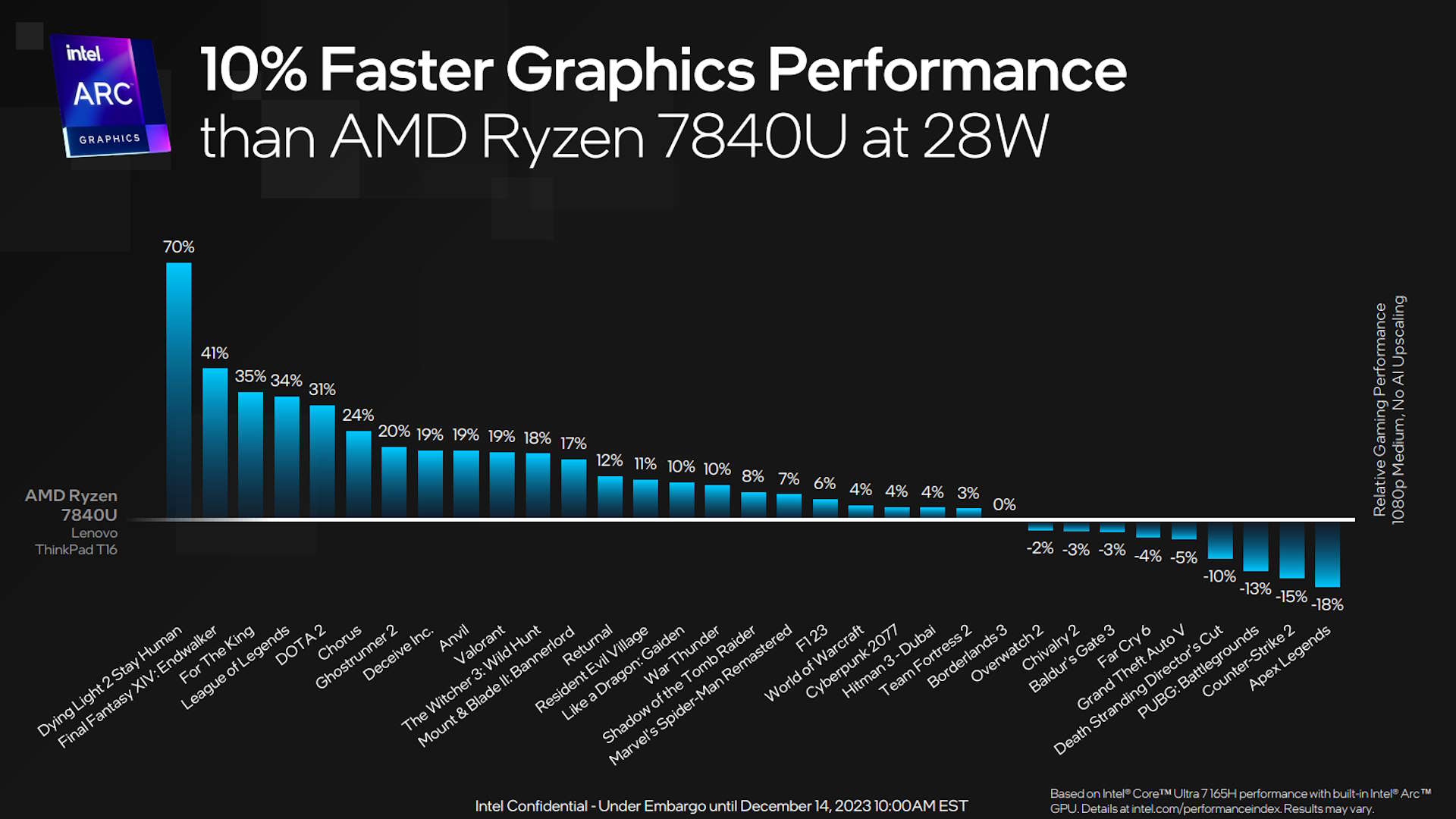
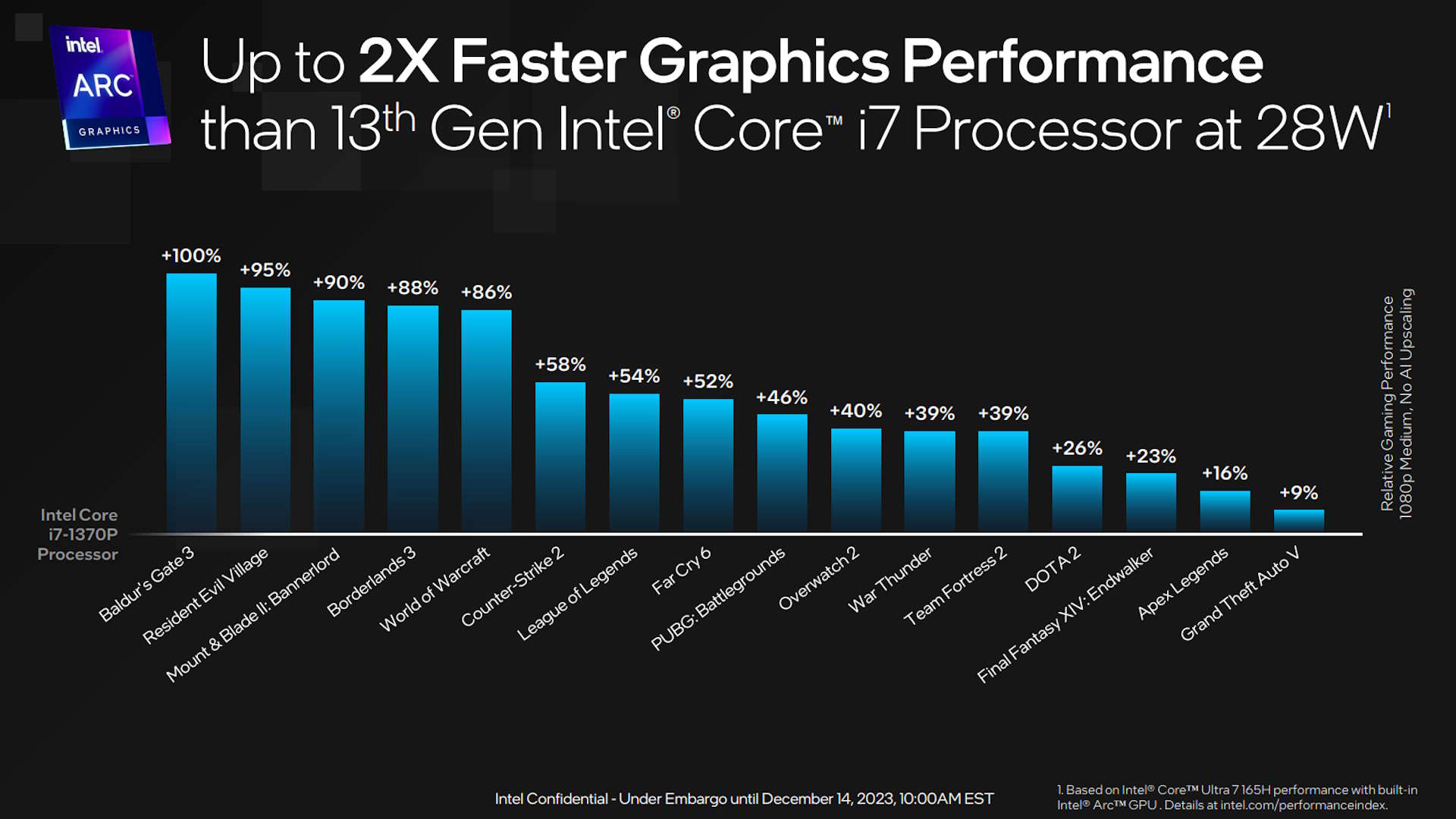
But it's the relative performance against the mighty AMD chip which grabbed my attention. We've seen leaked Meteor Lake 3DMark numbers, which looked good, but now we have actual game data. According to Intel's latest benchmarks (from testing on December 13 across 33 different games), Intel's claiming a 10% average performance lead over the Ryzen 7 7840U and its 780M RDNA 3 integrated graphics component.
The first thing to note is that this is based upon the current top Core Ultra 7 165H chip, which has the full complement of eight Xe cores running at 2.3GHz Max, and with it running at a 32W power limit. The AMD chip, on the other hand, is running at its lower 28W standard.
The 70% delta for Dying Light 2—a game Jacob highlighted as performing incredibly well on Meteor Lake—is a definite outlier here, and likely skews that average frame rate boost number quite heavily. But there are still some decent wins in there in the likes of The Witcher 3 at 18% and Resident Evil Village at 11%, though it's not a unanimous victory for Intel across the board.
Baldur's Gate 3 might be the big winner for Intel against its last-gen chips, but it's still slower than AMD, and so is the Core Ultra's performance in Far Cry 6, GTA V, Death Stranding, and others.

This is all based on native 1080p performance, though, and Intel does have its XeSS upscaling tech to fall back on with games that support it. And we're much bigger fans of XeSS in terms of its visual quality compared with AMD's FSR, so frame rates have the potential for a bigger boon with that enabled. Intel is promising an average 39% boost at 1080p with it enabled
Still, what it all highlights is that Intel's 16-core, 22-thread low-power laptop chips are going to provide some impressive gaming performance on the go. For how long, however, is a question we don't yet know the answer to. Intel wouldn't be drawn on any gaming battery life measurements for the new Core Ultra laptops, simply positing a spec of "10+ hours of real-world battery life under more intensive workloads."
But what it did note is a new feature called 'Endurance Gaming', which seems roughly analogous to Nvidia's 'Battery Boost' feature. With it enabled in the Arc control software it enacts an immediate frame rate lock to help maintain battery life. But there are definite caveats.
"When enabled, DX11 titles will then be limited to 30 fps and the SoC put into lower power modes. This provides longer gaming on battery time for various games," I was told by an Intel representative.
The fact it's seemingly limited to DX11 games is an issue, and it has to also be enabled by the laptop manufacturer, too, which feels like it may not end up being that useful after all.
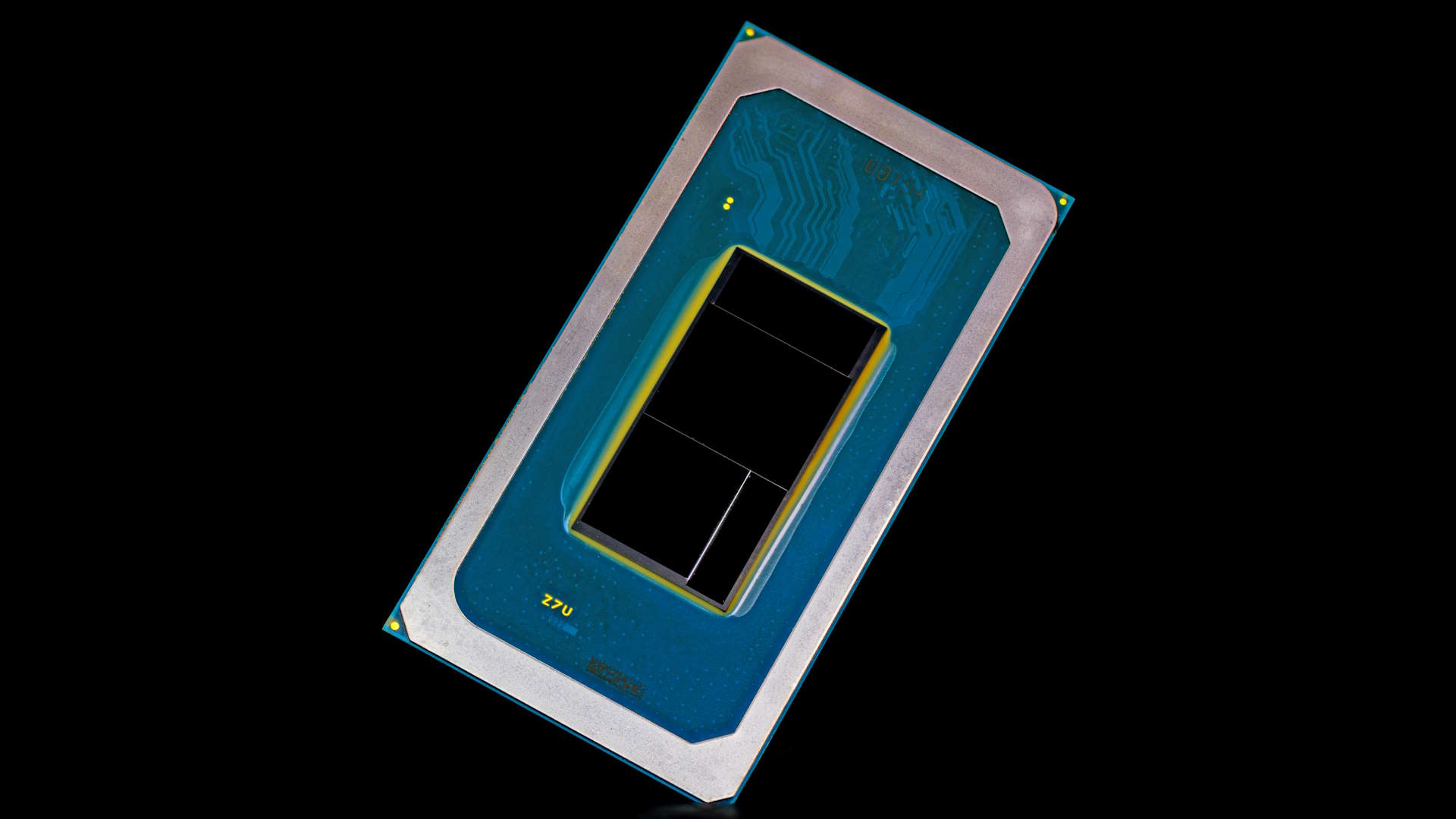
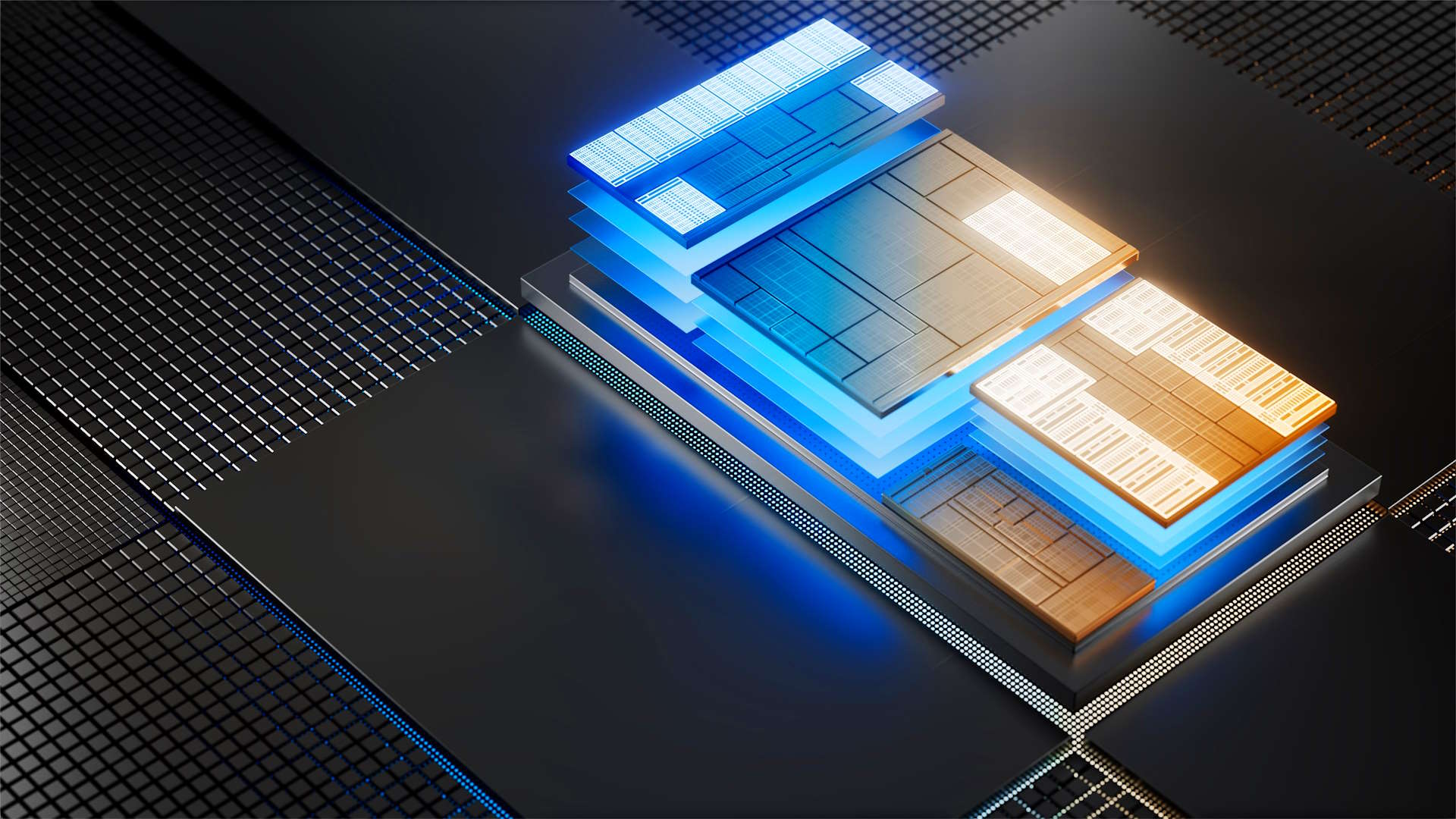

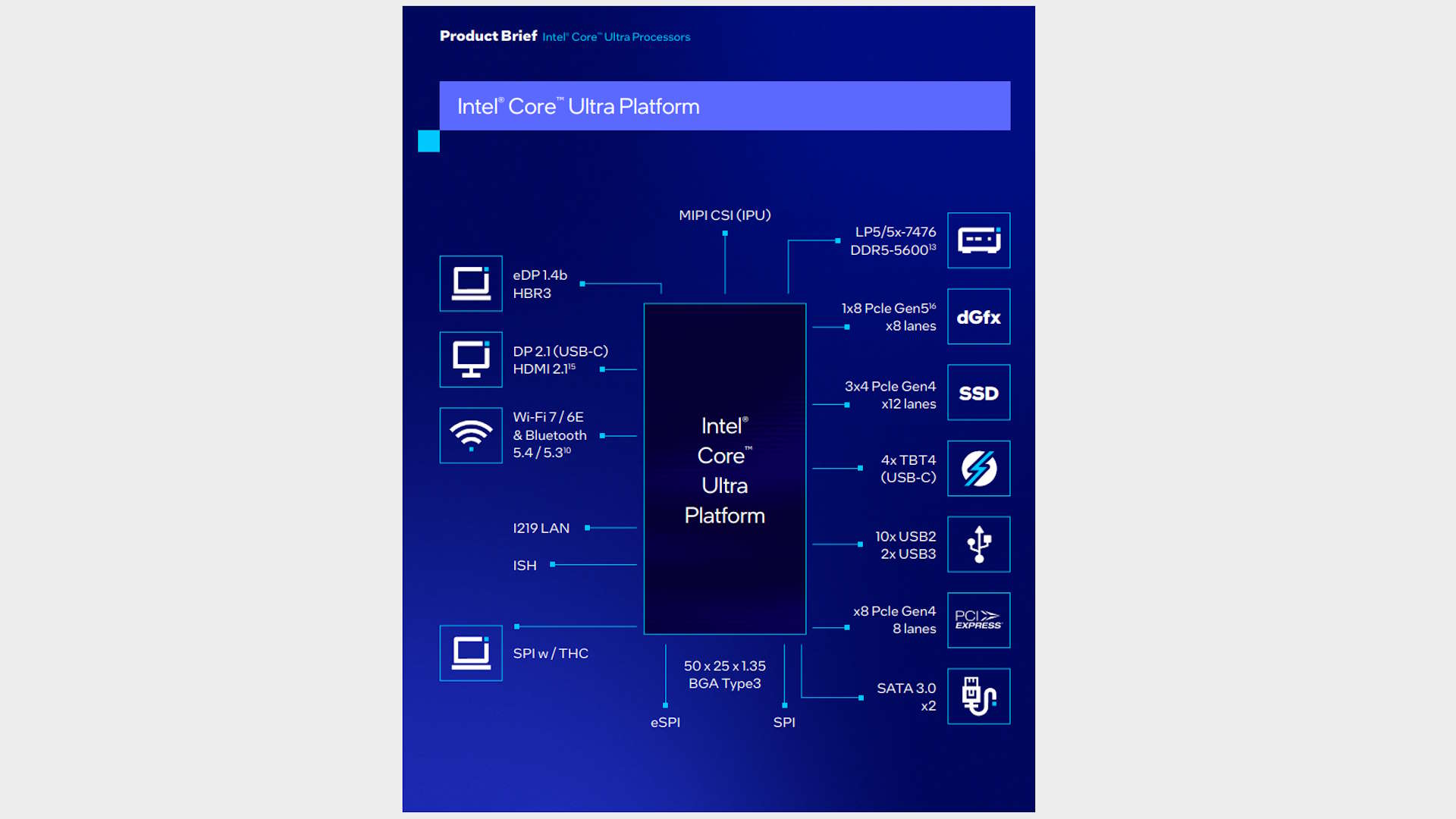
As well as these top H-series Core Ultra chips, Intel is also creating a U-series (which I believe is coming later) which has a resolutely 12-core design (with just two P-cores), just four Xe Arc graphics cores, and no PCIe 5 connections. It's also sporting a base power level of just 15W.
I'm still very much looking forward to actually getting a new Meteor Lake laptop in my hands and seeing what sort of gaming performance we can squeeze out of a new thin and light machine. Gaming laptops are great and all, but give me a 13-inch laptop I can slip into a satchel bag without breaking my spine that will deliver genuine 1080p gaming performance and I'll be happy.
I'll also be intrigued to see whether any of the current crop of handheld PC makers actually take a punt on Intel's new chip for any new designs of their own. I'm dubious, but if it's battery life is up there, and Intel make it affordable it could be a new avenue for the company. At present it's remaining tight-lipped and all I got out of Intel was an admission that it's "an interesting market segment that's evolving, that Intel is engaging with, although we're not ready right now to share any news on new form factors."
Effectively, the new Core Ultra laptops are available today, with designs out in the market today, December 14. So yes, Intel, you do get to say you launched your first Intel 4 processors in 2023. On track, eh?







